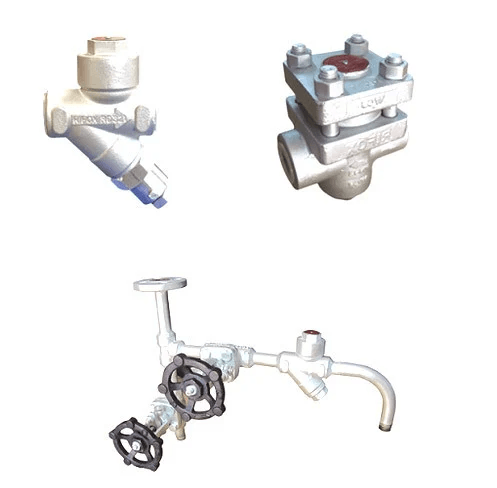Exactly Why Do You'll Need A Steam Trap Cape Town?

Steam traps are essential to any steam system, regulating the flow of condensate as it moves through the system.
A Steam Trap Survey is an in-depth assessment of all steam traps at a given site. This will help determine which areas there are savings in steam to be
realized.
1. Save-Energy
Steam traps remove condensed steam from boilers and also prevent the formation of non-condensable gases. A functioning steam trap can prevent the
loss of energy that is a significant source of energy consumption in your
facility.
The steam trap survey is a great method to determine the reason why a trap is failing or become unusable. They can be conducted by personnel working on site
or outsourced to experts.
The survey consists of conducting tests on each efficient steam trap to assess its operation. These results can be documented to calculate your return on
investment.
The majority of these surveys employ the difference in temperature between each trap's inlet and outlet sides in order to establish the temperature.
Advanced methods are also available, like ultrasound. These methods give quick
and accurate information.
2. Reduce the amount of water wasted
Steam is an extremely powerful energy source that can be utilized for heating raw materials or processing semi-finished products. It can also power equipment
and generate electricity which is the reason it is utilized in a variety of
industrial processes.
Condensate that forms on the outside of a piping line, it is able to quickly build up, leading to a rise in the amount of water wasted by a plant. To keep
the piping system running safely and efficiently, it is necessary to remove
excess water.
A regularly scheduled steam trap survey is the ideal way to cut your waste of steam and cut your energy consumption and reduce the chance of serious issues
such as water hammer. It's also an essential component of a reliable steam
maintenance and reliability program.
3. Lower Maintenance Costs
A steam trap inspection will help you cut down on costs for maintenance by identifying defective steam traps that are leaking and are not working properly.
The leaks can be costly for your facility and could result in issues such as
stopped production, frozen lines, water hammer and unscheduled downtime.
There are many ways to identify these problems. One is reading the temperature, which can provide an in-depth description of the state of the trap
by comparing the temperature of the steam and condensate entering the trap and
out of it.
Another method is ultrasound testing, which captures acoustic signals that result from steam's passage through an orifice. It's a quick and reliable method
to detect steam leaks within the internal structure.
4. Enhance Equipment Life
efficient steam trap will assist you to evaluate the performance of your trap and identify the issues with traps in your proactive trap-management program.
This includes insulation issues, water hammer, condensate return, piping issues,
back pressure, and stalling conditions.
This allows you to address trap problems before they turn into more serious equipment malfunctions. Traps that are not functioning properly can result in
longer downtime, more maintenance costs, as well as a reduction in longevity of
equipment.
A steam trap examination will usually reveal damaged or poorly functioning traps that could be leaking and plugged, as well as blow-through or blocked, all
of which waste energy and money. It will also allow you identify which traps
require regular inspection, replacement or repair to maintain reliable system
performance.
5. Reduce Noise
A steam trap inspection can in reducing the amount of noise that could be heard inside a building. It can also allow a skilled technician to assess how
each trap is operating.
To determine the effectiveness of traps traditional methods like listening devices, optical sight lenses, temperature monitoring and ultrasound techniques
were employed. However, all of these methods can become inaccurate as system
conditions alter.
Ultrasonic testers can swiftly and efficiently detect leaks within the internal structure. They can detect frequencies that are higher than 35
kilohertz. They are used with all types of steam traps, including impulse and
float-thermostatic traps.